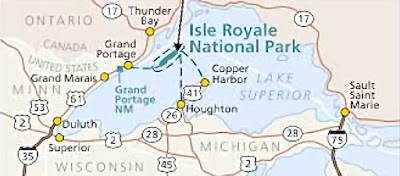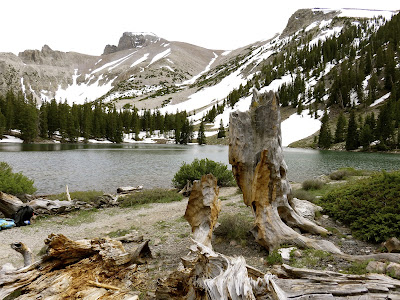"When you come to a fork in the road, take it..."
... Yogi Berra
 |
Yogi Berra's witty and sage advice led us to discover Green River Lake,
the headwaters of the 730 mile-long Green River.
Squaretop Mountain, in the center, is one of Wyoming's iconic images. |
Road Closed 70 Miles Ahead. Uh oh. Our planned stop for the night, Warren Bridge Campground, is along that stretch of road. I consulted my Wyoming map and camping guides and what do you know? A fork in the road, just before the closure, led to an alternative campground—Whiskey Grove, north of Pinedale along the west side of the Wind River Mountains.
I think we'll take that fork.
 |
Road Closed. A massive forest fire in the Bridger-Teton National Forest
closed a 50 mile stretch of Highway 191 in Wyoming and generated this
pink smoke cloud visible from 40 miles away. |
Just to be sure we'd made the right decision, Tim and I stopped at the Pinedale Visitor Center where I chatted with the pleasant older couple behind the information desk.
“We had planned to camp at Warren Bridge tonight,” I said. “But now we’re thinking about Whiskey Grove instead.”
“Whiskey Grove?,” they said. "Why that’s our favorite campground in the area. Much nicer than Warren Bridge.”
“What’s the story with the road closure?,” I asked.
“A lightening strike yesterday ignited a fire in the national forest, spanning both sides of the highway. They say the road will be closed for several days.”
“Will the campground be crowded then?”
“Shouldn’t be,” they replied. “Most folks traveling through here are headed for Grand Teton and Yellowstone National Parks. This afternoon we’ve had to send them on a 2-3 hour detour to get there. You shouldn’t have a problem securing a campsite in Whiskey Grove.”
Our change of plans affirmed, Tim and I drove the lonely road to Whiskey Grove. To the west the sky filled with billowing purple-pink smoke. Thirty minutes later we pulled into Whiskey Grove and found it mostly deserted. And delightful.
The campground is located in a bend in the Green River and nestled in an isolated pocket of pine trees. Rolling hills and evergreens surrounded our spacious campsite along the river.
After setting up camp Tim spent an hour fishing the Green. He wasn’t disappointed, catching a couple good-sized rainbow trout.
 |
| Our spacious campsite in Whiskey Grove Campground. |
 |
| Tim and Annie fish the Green River, just down the hill from our campsite. |
We spent a mostly idyllic four days at Whiskey Grove. Why mostly idyllic? Well, we discovered two negatives to the area.
Our first night in the tent we woke at 1:00 a.m. to a deafening roar; heart-stopping, unnerving, menacing. The noise was so loud and frightening I was sure a jumbo jet had crashed into a nearby hillside. Later we learned this valley is a night training ground for fighter pilots and their jets.
The other issue? "Killer" insects patrol this area—mosquitoes and biting flies. On the first evening I counted 35 bug bites. That night in the tent I clawed relentlessly at the itching, stinging welts on my legs and ankles.
I can imagine readers thinking to themselves: Wow, that sounds like fun. Not!
But here’s the thing. In spite of the fighter jets and the bugs I would stay at Whiskey Grove again. In a heartbeat. Far from the madding crowds, in the near pristine setting of the headwaters of the Green, our three night home-away-from-home proved a destination worthy of our unplanned detour. My advice? Heed Yogi Berra, the late, great MLB All-star catcher and manager of The New York Yankees: The next time you're traveling and you come to that fork in the road, take it! Wherever it may lead.
 |
Looks like a wonderful evening around the campfire, doesn't it?
In reality I was eaten alive by bugs at this very spot. |
 |
In a scene that could be straight from a movie, range-riders trot across the sage-covered hills
while Tim fishes the meandering Upper Green River. |























































